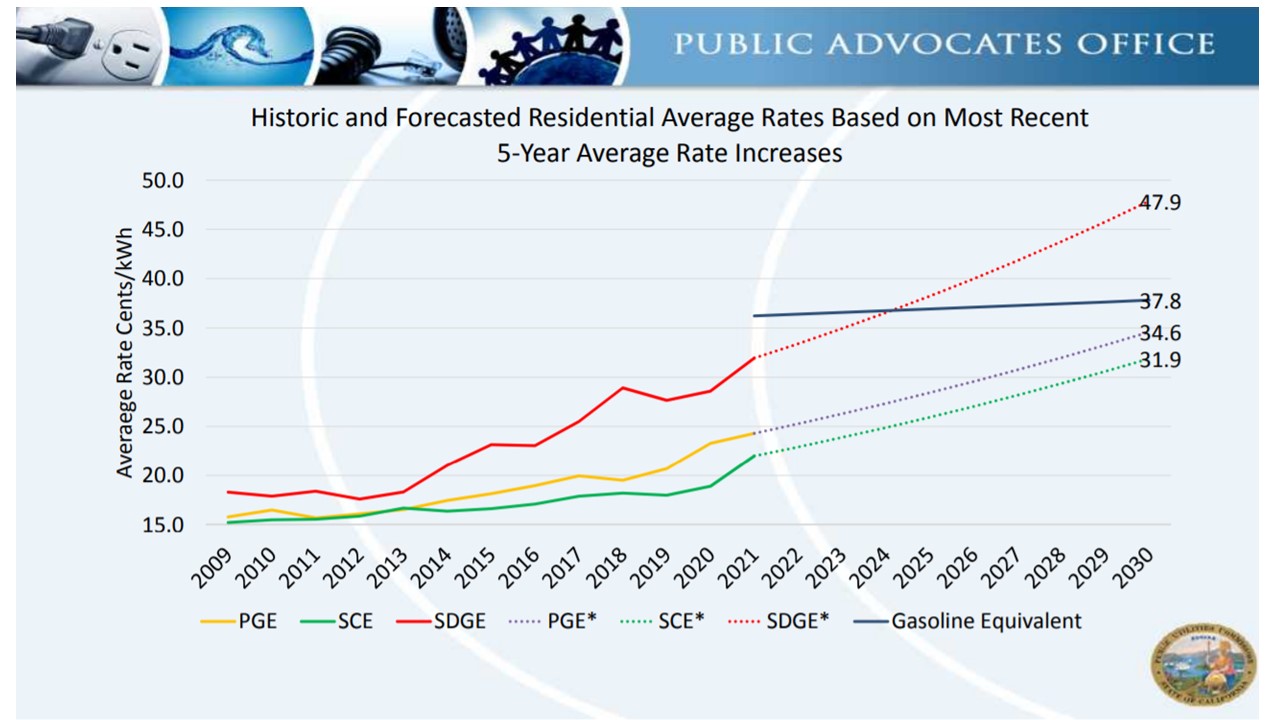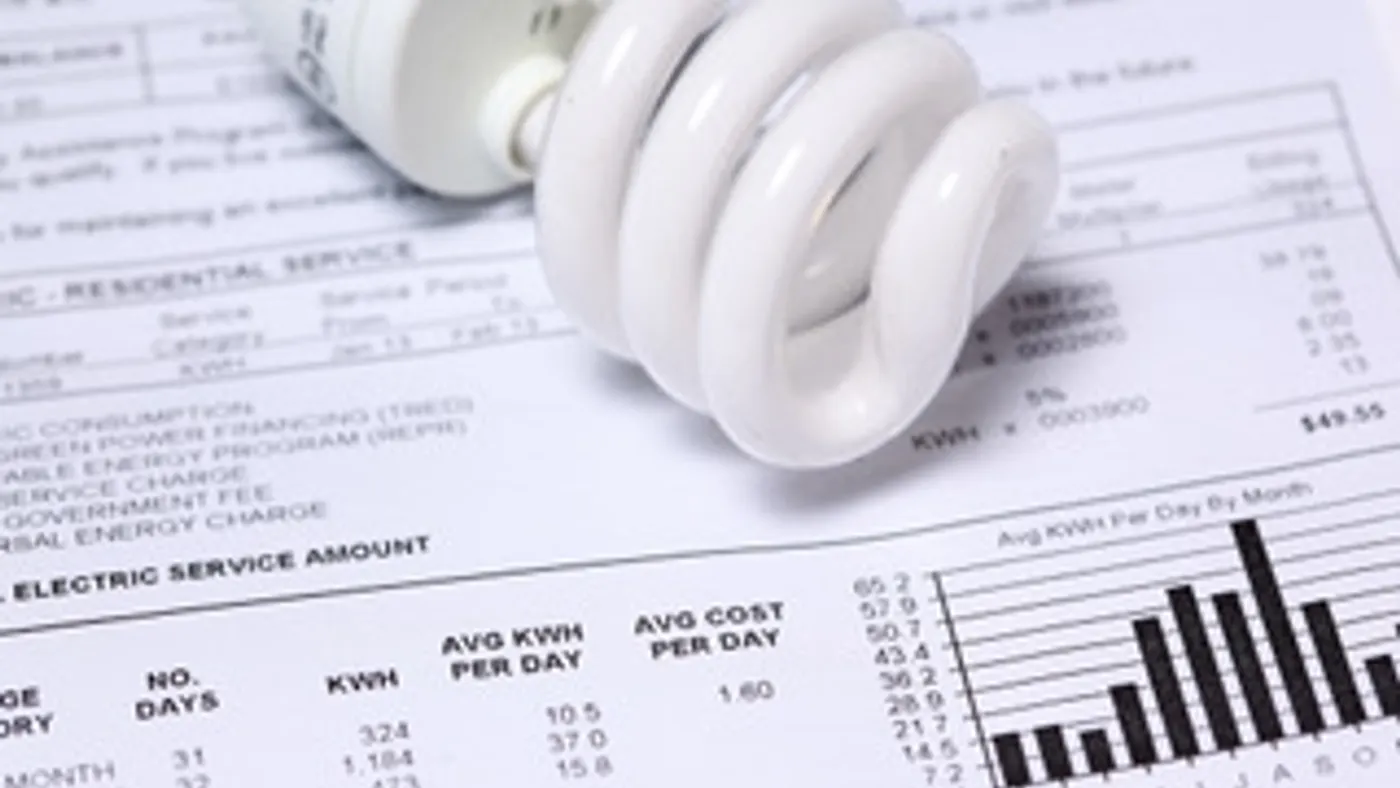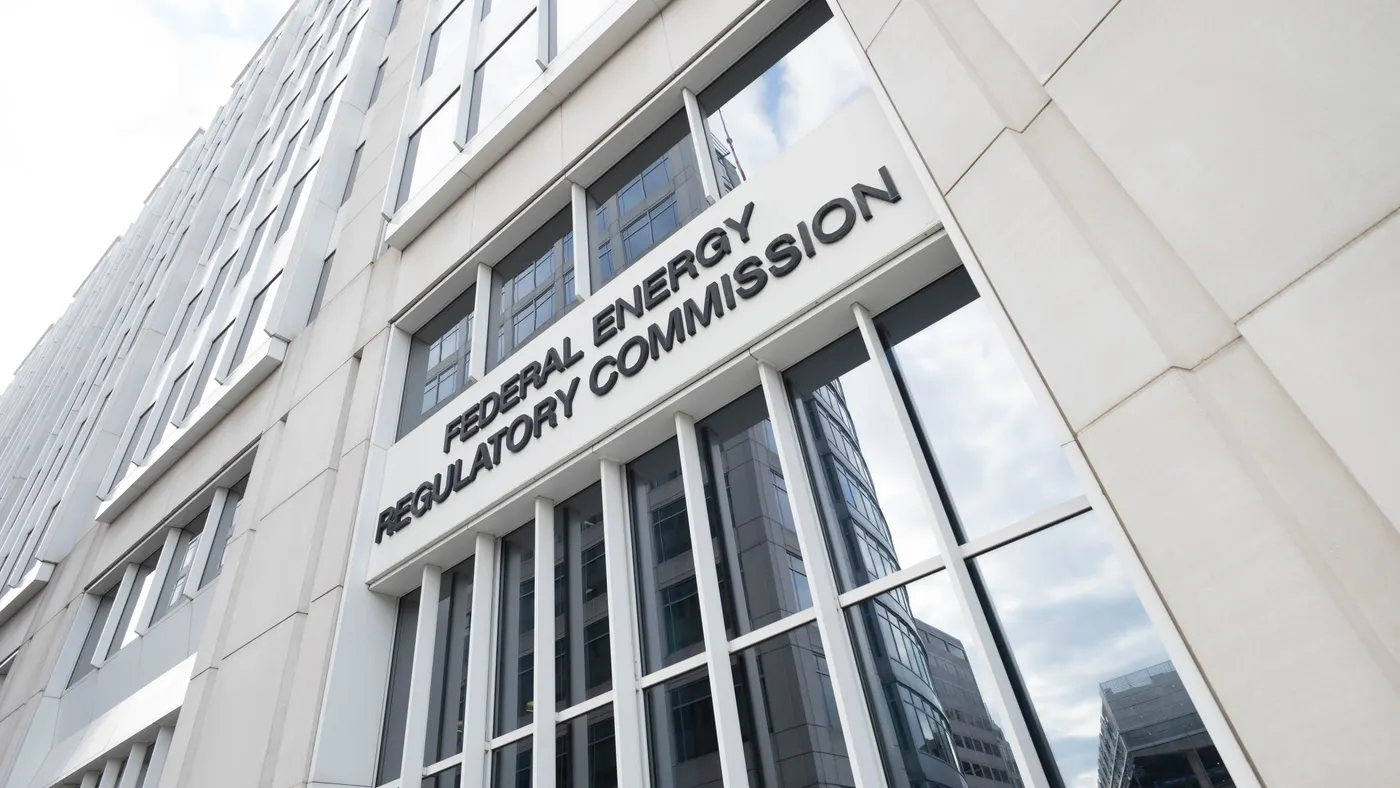California's dilemma: How to control skyrocketing electric rates while building the grid of the future
California Public Utilities Commission (CPUC) President Marybel Batjer says the state will not let skyrocketing electricity rates threaten reliability or the state's policy goals.
But affordability is a growing concern as California works toward a "future grid" and a dynamic new power system to meet the climate crisis and related extreme weather events, stakeholders and CPUC Staff maintain. Rates rising far faster than inflation are straining the budgets of vulnerable customers and new approaches that protect policy goals and customer bills are urgently needed, they agree.
Protecting ratepayers as California transitions to distributed energy resources (DER) and economy-wide electrification "will require aggressive actions," according to a report released by CPUC Staff in February.
At a day-long CPUC hearing, California utilities proposed cutting wildfire costs and raising revenues outside rates. Stakeholders proposed shifting the costs of supporting DER and electric vehicles (EV) out of rates to other sources of revenues. Others proposed breakthrough rate designs that could make managing costs more equitable.
Staff report finds rising rates
The upward pressure on rates could force unwelcome choices on policymakers, especially to protect low to moderate income (LMI) customers, according to the Staff report.
Driven by clean energy and electrification mandates as well as utility investments in system modernization, residential rates across California have risen faster than inflation since 2013, Staff found. And due to Net Energy Metering (NEM) and other DER incentives, impacts have been worse for LMI customers, it said.
By 2030, Pacific Gas and Electric (PG&E) residential rates will be 40% higher than if they had followed inflation, Staff projected. Southern California Edison (SCE) rates will be 20% higher and San Diego Gas and Electric (SDG&E) rates will be 70% higher.
LMI customers are "like canaries in a coal mine," said Jennifer Dowdell, an energy policy analyst for customer advocacy group The Utility Reform Network (TURN). "Rates are growing so much faster than wages that even the middle class may soon need rate relief."
The rise in rates is impacted by other factors, Staff reported.
"Rate based capital investments in transmission and distribution are accelerating," and wildfire mitigation costs have "significant rate impacts," Staff found. The report projected wildfire mitigation costs from 2021 to 2030 will cost PG&E $23.7 billion, SCE $17.2 billion, and SDG&E $3.9 billion.
Another factor is the costs of the state-mandated net energy metering (NEM) 2.0 program that compensates DER owners for electricity sent to their power systems. Net-metered generation was over 15% of PG&E, SCE and SDG&E residential electricity consumption in 2019, recent research showed.
An independent evaluation of the NEM 2.0 program from 2017 to 2019 found the policy "increases non-participant bills," Staff reported. In that period, an overall system evaluation found total benefits of $7.96 billion and total costs of $9.46 billion. A separate evaluation of customer bill impacts found total benefits of $7.58 billion and total costs of $20.58 billion.

Transportation and building electrification "can lead to lower household energy costs" where the cost of electricity is lower than the price of gasoline or natural gas, but the high "up-front" costs of EVs and DERs are a "barrier to participation" for LMI customers, Staff found. That leaves them with "incremental costs" as revenues covering system costs from more affluent customers who adopt DERs fall.
In addition, Staff found reducing the state's 46 MMT 2030 power sector emissions target to the proposed 38 MMT target would add $0.006/kWh to $0.008/kWh to all customers' rates because more emissions reductions would add new system transition costs and accelerate current patterns.
Revenue requirements for transmission system modernization also put major upward pressure on rates, Staff said. From 2016 to 2021, the three IOUs' requirements will increase 38.1%, Staff projected. And "every dollar put into the transmission rate base costs ratepayers in excess of $3.50 over the life of a transmission asset." Transmission use charges are also driving rates up.
Concerns about rates are important, but investments in DER offer "net benefits to the California economy" that Staff has overlooked, stakeholders responded.
A shift to a high home electrification scenario would add 4.7% to 5.8% to the total 2030 utility revenue requirement because investments would be needed for distribution system upgrades to manage the new load. But utilities' 8.5% increase in 2030 electricity sales could lower average rates, Staff acknowledged. And EV ownership with or without managed charging programs reduces driving costs.
But affordability is at risk, and "it is hard to pinpoint places where we should cut back," said CPUC Deputy Executive Director for Energy and Climate Policy Edward Randolph. Wildfire mitigation and transmission development are critical to avoiding outages, "and investments in clean energy are necessary to meet state policies, have minimal bill impacts, and could save money over time," he added.
Stakeholders have proposed two paradigm-shifting rate designs to address Staff concerns.

A volumetric charge fix
Stakeholder rate design proposals address a utility bill's fixed charge and volumetric per-kWh charge, but in different ways.
With electricity sales declining from "energy efficiency, energy conservation, and customer generation, the bill's fixed charges do not cover fixed costs," Staff said. Higher volumetric rates have been approved to cover fixed costs for infrastructure, DER and LMI subsidies, energy efficiency programs, and wildfire mitigation.
The Regulatory Assistance Project (RAP) Advanced Residential Rate Design proposes time-varying rates to cover costs not met by the fixed charges, RAP Associate Mark LeBel said. They are more granular than California's current time-of-use (TOU) rates and "are incentives to use electricity when it costs least and export electricity when the costs are highest because it is most valuable to the system," he said.
Consulting firm Verdant's NEM 2.0 study showed California's TOU rates create inequities, and an Energy and Environmental Economics study for the CPUC proposed high fixed charges as an alternative, LeBel said. The RAP rate design "allows for equity and encourages electrification." It also includes a unique "bidirectional distribution network charge" that "assures utility revenue requirements are met," he added.
RAP's bidirectional charge is a per kWh charge on imports and exports that matches the evolving grid's two-way power flows, LeBel said. It would vary according to netting and other options. And it could also be implemented incrementally, with increasingly nuanced time periods and sophisticated customer segments.
This rate design is only necessary in places like California and Hawaii with high penetrations of DER that are shifting costs, he added. "It does not solve all the challenges, but it can be part of a package of solution strategies."

A fixed charge fix
RAP's proposal does not solve California's fixed costs challenge, said Severin Borenstein, director of UC Berkeley's Energy Institute and professor of Business Administration and Public Policy.
Putting policy objectives in the volumetric part of utility rates or increasing all customers' fixed charges is "regressive," added Borenstein, who is also a member of the California Independent System Operator Board of Governors.
The price of electricity should reflect and cover the "social marginal cost" of each unit of electricity, he said. That is the cost of generation, transmission, distribution and greenhouse gas emissions in a unit of electricity plus the still-unpriced societal impacts of pollution from producing electricity.
California rates are "way above that" because fixed costs, including those for infrastructure, wildfire mitigation, and LMI and DER, are paid for through the volumetric charges, he said during a Feb. 24 CPUC hearing. A more "progressive" rate would recover fixed costs from an income-based fixed charge that would be low for LMI customers and higher for the more affluent.
The fixed charge innovation is a more complicated rate design because it requires income information, and customers' privacy would require protections, Borenstein acknowledged. But California's tax authority and its utilities could resolve those obstacles.
The Borenstein data shows today's rate structure is regressive, LeBel agreed. But his rate design has implementation challenges, like income verification, that are probably only worth taking on at high levels of DER penetration, he said. And it "increases the rates of higher income customers, which gives the people who can most easily afford to defect from the grid the biggest incentive to do that."
Recent research does show a high volumetric charge could increase grid defections in high penetration markets, Borenstein said. "But this is a fixed charge increase. The wealthiest customers might face an $1,800/year fixed charge, but would have a $0.10/kWh volumetric charge. That is less reason to defect than the $0.40/kWh volumetric charge forecast for California."
There is a simpler approach, Borenstein said. California could add electricity to the programs it offers, through the state budget, to help LMI citizens with food and healthcare, but that would be "politically difficult" because it would have tax impacts. "There is no easy solution," he said. An income-based fixed charge "is the best alternative."
But the CPUC hearing produced other alternatives, including utility proposals for cutting costs and increasing revenues as well as stakeholder proposals for alternative funding.

Alternatives to rate redesigns
The rapid rise in California's rates makes finding solutions urgent, utilities and stakeholders agreed.
"We are in a rate crisis now with electricity costs growing faster than inflation, inequity rising, and wildfire costs coming," said CPUC Public Advocates Office Electricity Pricing and Customer Programs Branch Manager Mike Campbell.
"Climate change is the existential problem of our time, but the commission's approach so far addresses it like the blind man encountering an elephant who sees only a part instead of the whole challenge," Center for Energy Efficiency and Renewable Technologies (CEERT) Senior Technical Consultant Jim Caldwell added.
PG&E is working on ways to reduce costs and generate other sources of revenue, said PG&E Vice President of Regulatory and External Affairs Robert Kenney. "Operational efficiencies" may save nearly $1 billion/year through 2025, and $973 million in revenue is expected from agreements with wireless provider SBA Communications for the future use of PG&E transmission towers, he said.
In addition, customer-funded wildfire self-insurance "can be a near term solution until better wildfire control technologies bring premiums down," said SCE Senior Vice President of Strategy and Regulatory Affairs Carla Peterman.
SCE's "tower of insurance" to meet the $1 billion coverage now mandated by California law may include layers of commercial insurance, bonds and reinsurances, and "premiums in some layers could exceed utility losses," Peterman, a former CPUC commissioner, said. "Self-insurance could be more affordable."
Self-insurance eliminates insurance company administrative costs and profits, and "if claims are low, new premiums will be minimal," she added. Savings could be "in the hundreds of millions of dollars over a multi-year period."
SDG&E's wildfire mitigations are the industry standard and it is investing in new technologies to improve its capabilities, said Scott Crider, the utility's chief customer officer. And the investments' "risk-spend" balance is focused on reducing the need for future wildfire mitigation capital expenditures.
The political barriers mentioned by Borenstein to leveraging public revenue for public programs like wildfire mitigation and building and transportation electrification may not be impossible to overcome, some stakeholders said.
"Many of the costs in rates are to achieve societal benefits," TURN's Dowdell said. "Traditional utility rate making is one of the most expensive and regressive ways to obtain those benefits."
When California utility rates were relatively low, they could be used for policy objectives, "but the state does not have that luxury anymore," Dowdell said. A better concept may be California ownership of assets like large-scale long duration storage, new transmission, and EV charging infrastructure needed to achieve state goals. Others saw this idea as having varying prospects of success because it could increase the tax burden.
"There's not one magical strategy," Dowdell added. "Tax revenues to pay for those investments could come from California's general fund or the state and municipalities could use their bonding authority for specific infrastructure projects."
At the close of the hearing, the CPUC's Randolph complimented the stakeholders' proposals but also cautioned broadly about unintended consequences as commissioners consider which to implement.
On the other hand, "the commission needs to recognize that even the right investments will put upward pressure on rates, but it also needs to look at the consequences of not investing," CEERT's Caldwell said.
















